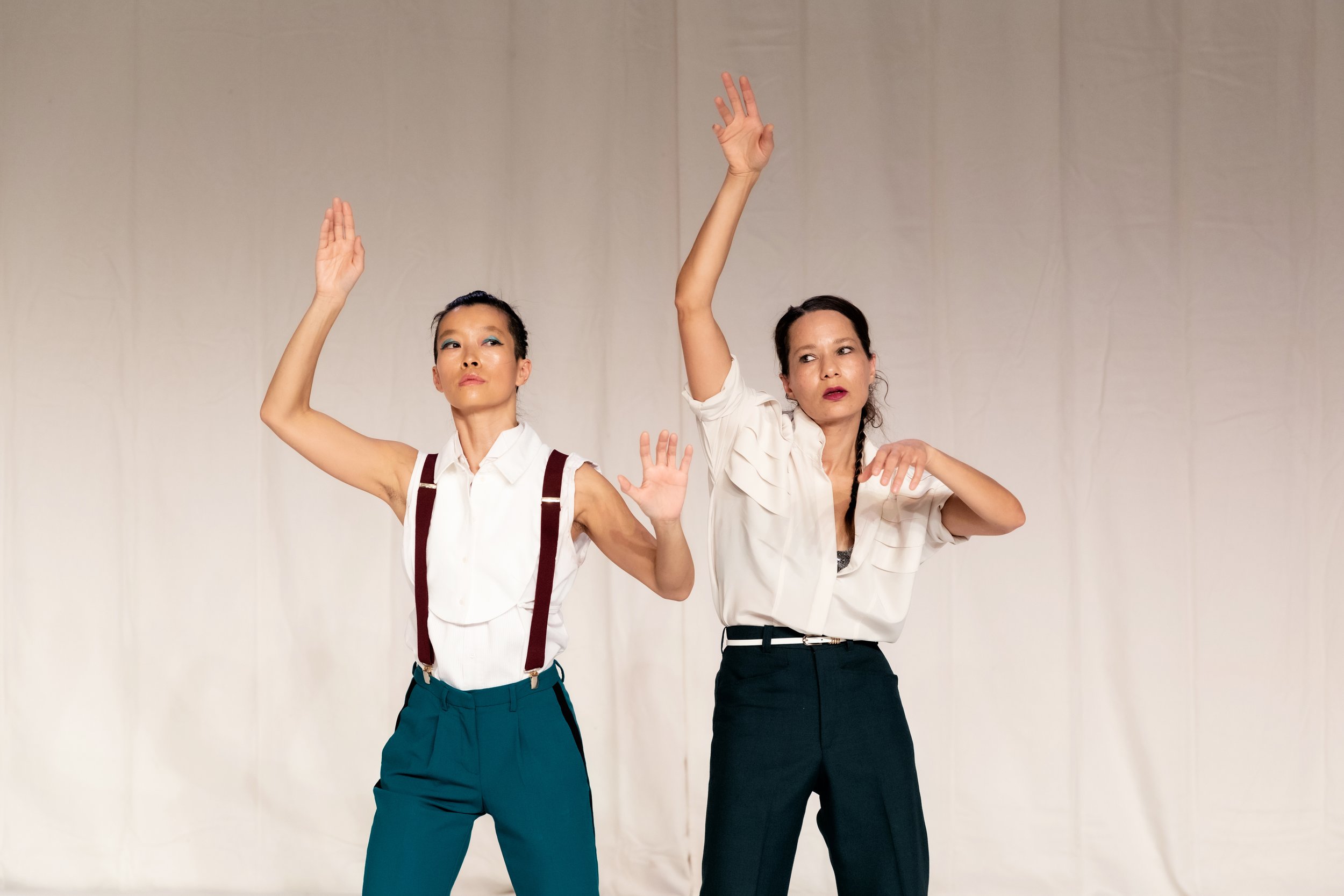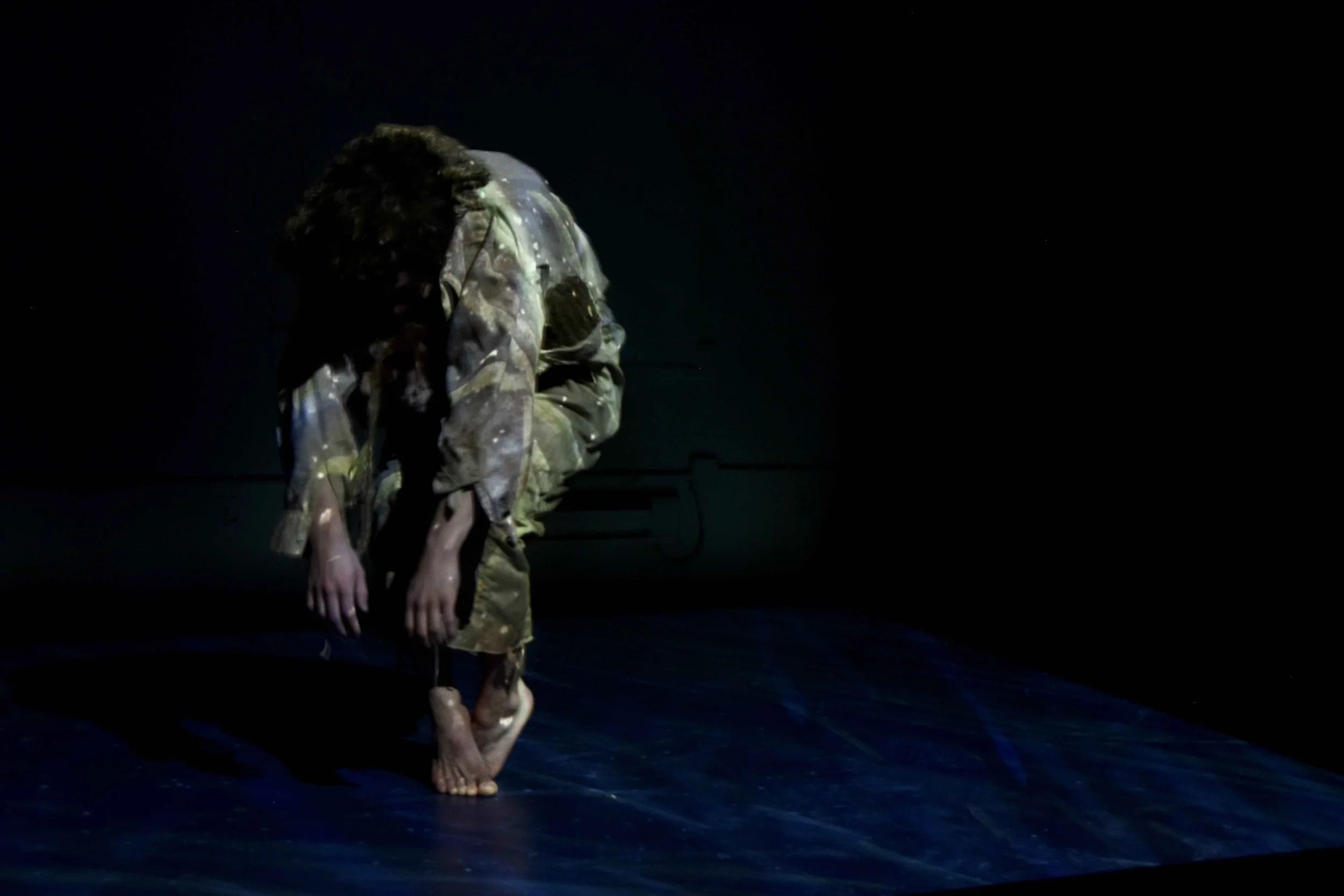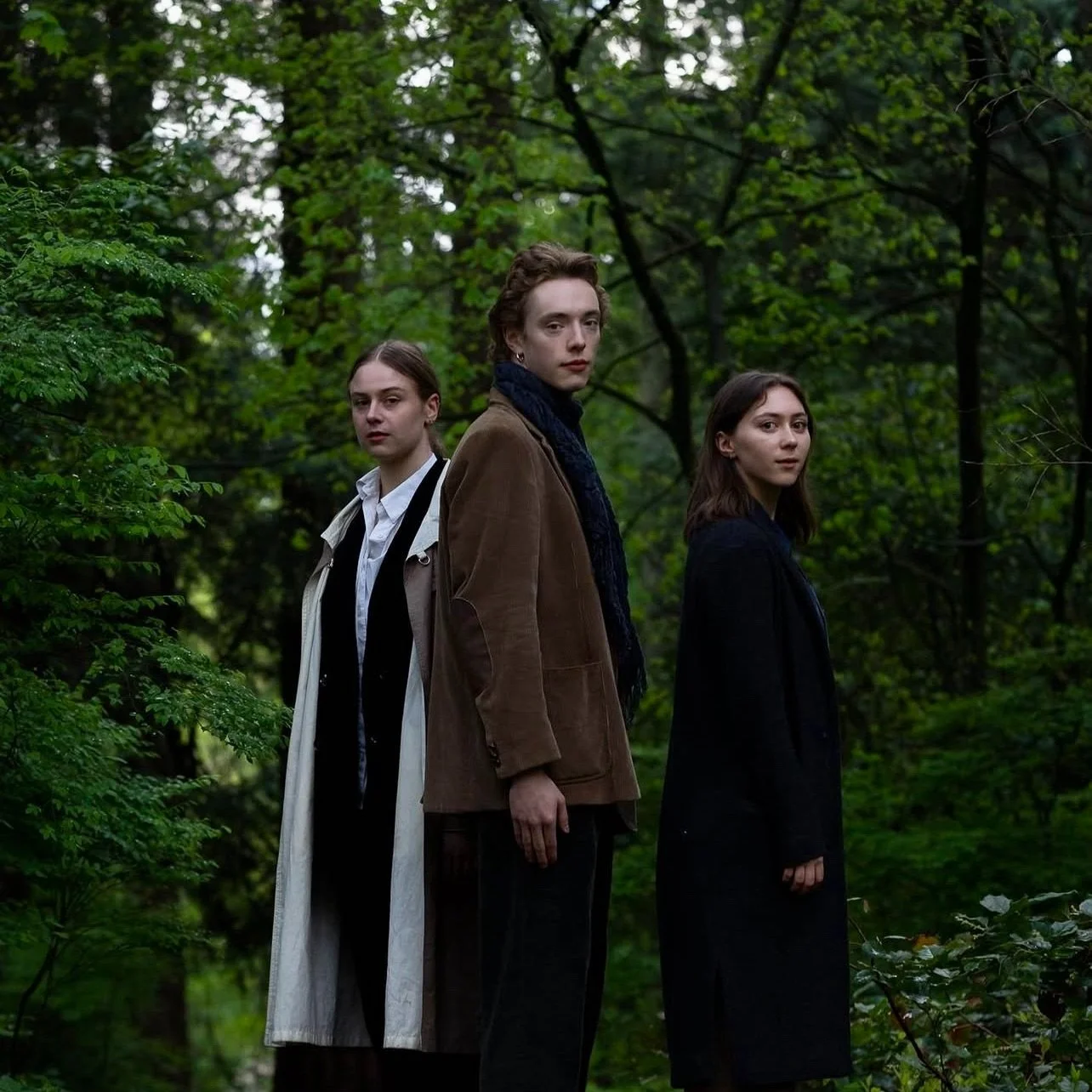Dance review: One hundred more brings the ongoing need to resist oppression to frenzied life
Through pulsing rhythms, repeated gestures, and intense eye contact, new dance duet is a call to action
Laurie Young and Justine A. Chambers. Photo by Oliver Look
One hundred more was at the Scotiabank Dance Centre on October 13 and 14.
IN THE MIDDLE OF their piece One hundred more, Laurie Young and Justine A. Chambers come to a halt centre-stage and cross their arms next to each other. Chambers reaches to place her left hand on Young’s arm, and they pause, staring intently into the eyes of the audience members bearing witness. The pulsating music goes silent. It’s as if everyone in the theatre is holding their breath.
While the scene is a small moment of physical rest for the dancers in a piece that moves unrelentingly, it’s far from a moment of mental rest. Driven by current socio-political movements like Black Lives Matter, One hundred more highlights the immense and repetitive resistance of BIPOC individuals, drawing on the lived experiences of Chambers and Young as women of colour.
Young and Chambers are already standing onstage when the audience flows into the theatre. Everyone finds their seats casually, when suddenly the piece opens without warning—Young and Chambers starting to count aloud from one to 100. Slowly, the chatter in the audience trickles to a quiet, and the pair’s counting softens to a whisper. Chambers and Young move slowly around the stage, staring fixedly at the crowd as they go through the numbers again and again. Sometimes their counting grows laboured and weary, interwoven with sighs; other times it is loud and clear. Most often it is soft, persisting even if the numbers being whispered aren’t clear to the inattentive ear.
Several minutes later, Young and Chambers stop chanting centre-stage, and a steady, thundering electronic beat composed by Berlin-based DJ/producer Neda Sanai and performed by Toronto-based artist Victoria Cheong begins, driving Young and Chambers’ frenzied, pulsing movements. Their low, rhythmic bounces and articulated hand gestures are amplified by the lighting design of Hungarian artist Emese Csornai. A strip of bright white lights lining the bottom borders of the stage flash on and off abruptly, plunging the room into a panicked atmosphere.
Young and Chambers’ hand gestures range from beckoning to defensiveness. Their arm movements are at times expansive and assured, at other moments more contracted, the flexion of their wrists and elbows creating unnatural angles.
Throughout the piece, the pair’s eye contact with various audience members remains unwavering and personal, a feeling you seldom come across in live dance performances. They gaze deeply into the crowd (a full house of just 154 intimately close seats on opening night), their faces conveying defiance, exasperation, accusation, and more. They are holding all of us accountable—calling on us to take action.
In this piece, Chambers and Young are not so much dancing a role as they are expressing the weight that the BIPOC community carries in their day-to-day lives. Adding to this sense of reality is the costume design by Sarah Doucet: an assortment of ordinary business-casual jewel-toned slacks, white blouses, and slicked-back hair.
While there are moments throughout the performance that leave you hoping for a dramatic outburst or movement, that is simultaneously One hundred more’s beauty: Its steadfastness mimics reality. The BIPOC community is constantly resisting systemic oppression, while any change that ensues is often slow and subtle. One hundred more is truly a piece composed of small details that build into a catalyst for change.













